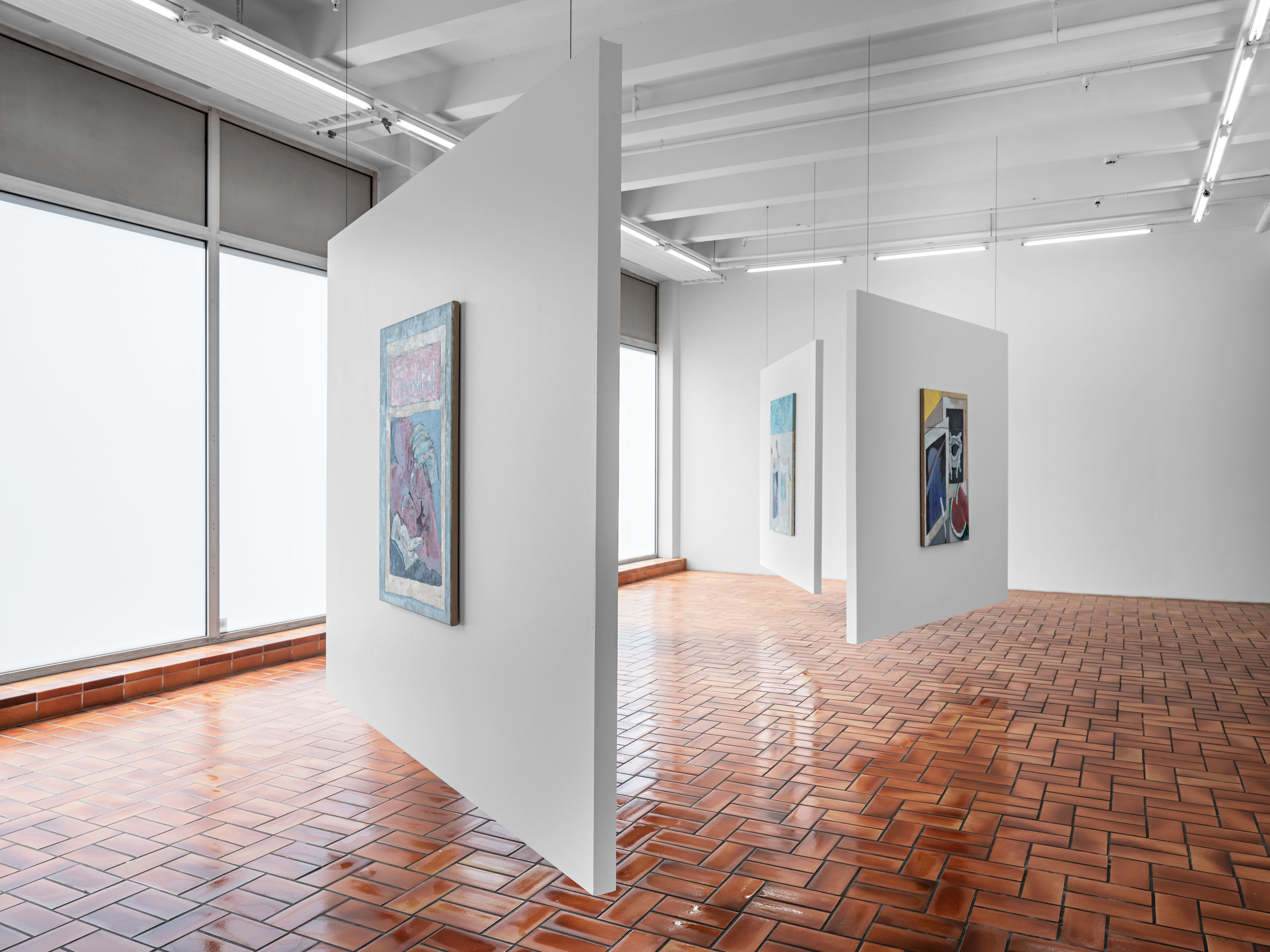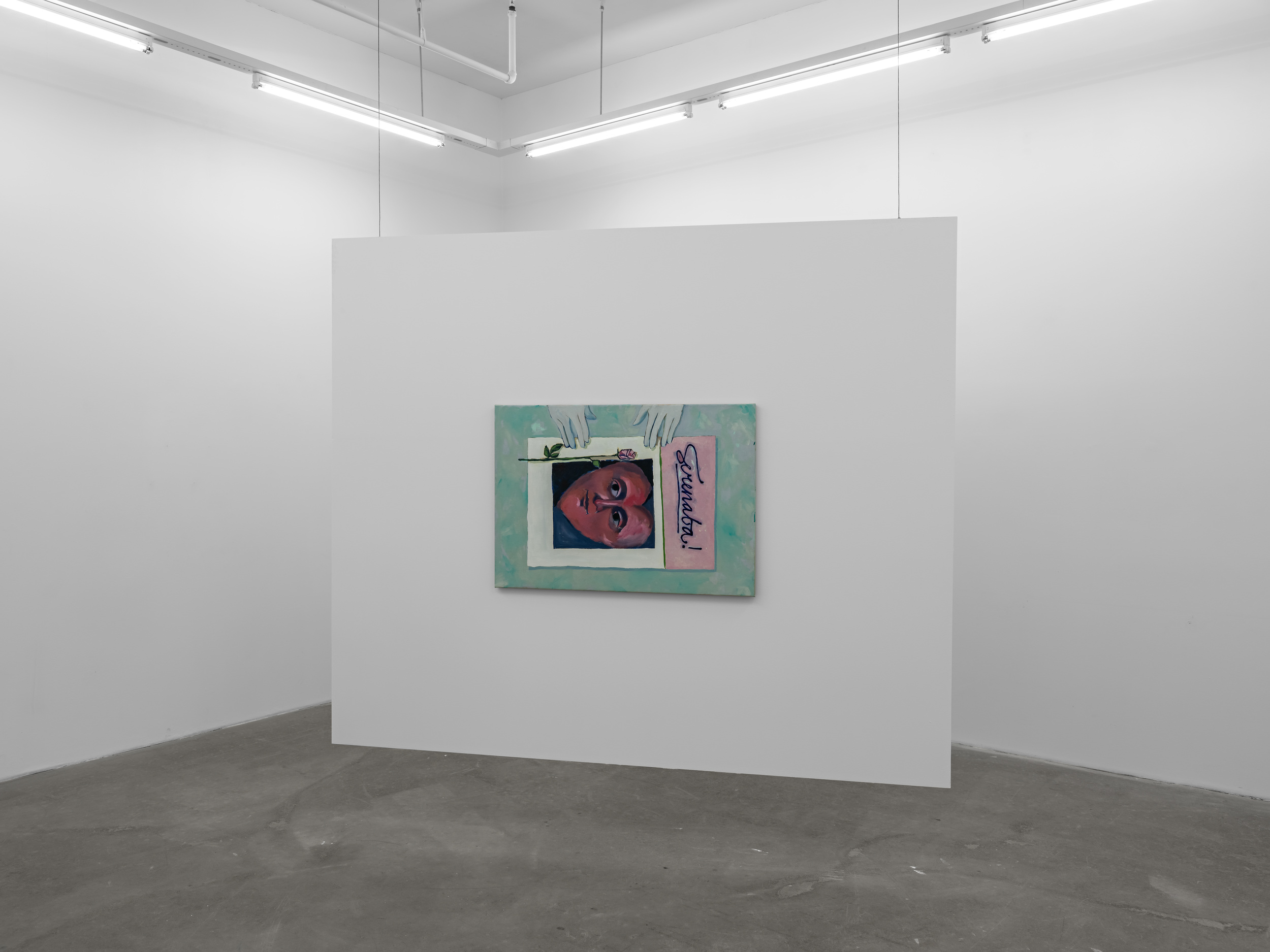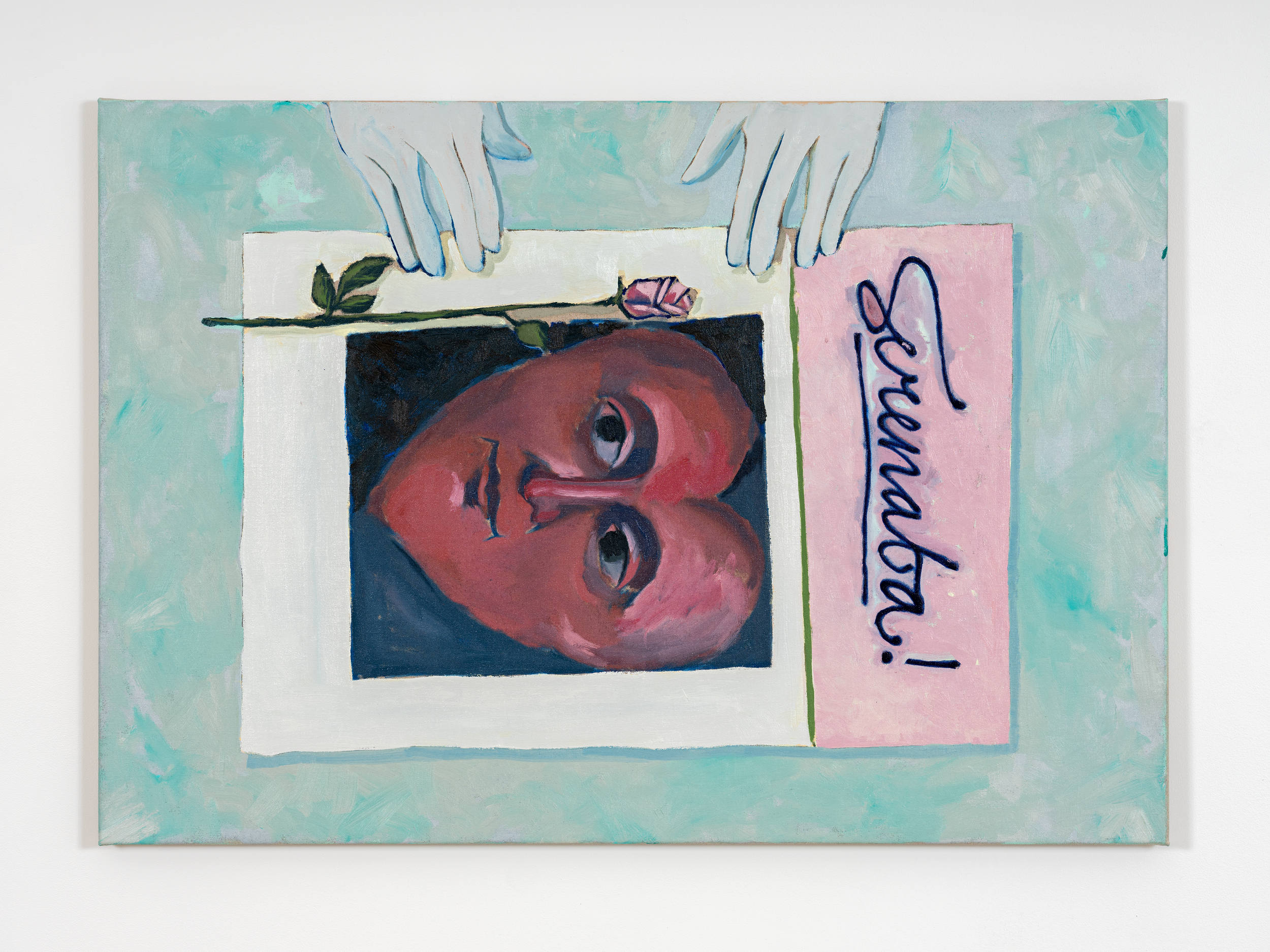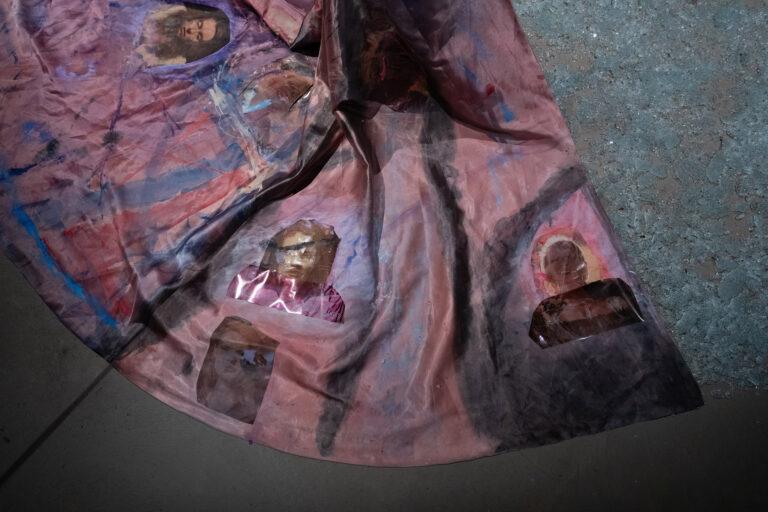Artist: Mikael Lo Presti
Exhibition title: Echoes of the Street Vendors
Venue: STANDARD (OSLO), Oslo, Norway
Date: May 11 – June 9, 2018
Photography: Vegard Kleven / all images copyright and courtesy of the artist and STANDARD (OSLO)
STANDARD (OSLO) is proud to present a solo exhibition of new works by Stockholm-based painter Mikael Lo Presti. Entitled “Echoes of the Street Vendors”, the exhibition comprises of 12 oil paintings.
“For the theatre one needs long arms; it is better to have them too long than too short. An artiste with short arms can never, never make a fine gesture.”
– Roland Barthes
“You could trace these elements to work I did 20 years ago, and obviously I am not responsible for that, but that sense that there is some significance in a piece of clothing on the floor. I cannot bitch about millions of people who photograph their food. But I didn’t photograph plates or still lifes to show my friend: ‘Look! I’ve just eaten this banana!’ I really didn’t, but I was accused in the 90s by critics that this was shallow, vacuous, unimportant subject matter.”
– Wolfgang Tillmans
A friend of mine somewhat depressingly declared that despite trying to live her life to the fullest, her most popular post on Instagram was that of a pizza she once had for lunch. Similar to how a still-life painting would historically be considered the lowest in the hierarchy of genres, she rated this photo of hers lower than her many other Instagram posts of grand landscapes taken during hikes and summer vacations, those photos of seminal artworks she sought out in museums in New York and on her many travels, those carefully cropped photos of grand architecture, the documentation of the greater moments of life as well as those split seconds of everyday life that she just had happened upon – moments unprecedented and unrepeatable. That is hardly how you would describe a photo of a pizza.
Then again, long before Instagram permitted millions and millions to indulge in perfect pictures of other people’s lunches, the still-life paintings – with their depiction of food, flowers and other commonplace objects – had gained popularity and found ample amounts of buyers during the the 16th and 17th century “Golden Age of Dutch Painting”. What it lacked in terms of the history paintings’ idealist and intellectual effort to “render visible the universal essence of things”, it compensated with its enticing disarray of objects, allegorical ambitions and common display of skills in the execution. The painting of textures and lighting effects, as well as the intracity of folds and patterns, all challenged the painter and intrigued the viewer. Photographer Wolfgang Tillmans said of his own still-lifes some 250 years later, resonating with the core quality of the genre: “There’s more information in these pictures than you can ever remember. So we have to make sense of the detail. And that’s what is hard to bear, the meaninglessness of everything.”
Into this arrangement of purposeful artefacts, Mikael Lo Presti inserts hands. These are hands not belonging to particularly long or particularly short arms, or showing much of Roland Barthes’ concern thereof. In fact, all we see are the hands; covered in white gloves that is permitting a gentler touch and a greater care, but also concealing any trace of race or gender or finger prints. A bouquet of flower is wrapped up. A page of a book is turned to present the photos therein. A set of keys and a mobile phone is either put into or lifted out of a handbag. Seemingly simple, these gestures are made with the utmost ease and elegance, and rendered with the clarity of instruction manuals or scientific illustrations. A clarity that is further emphasized by a compartmentalized build up of composition; imposing a logic of echoing forms, where the appearance of a book has the painting taking on the corresponding form with a vertical split running the entire height of the painting. Yet the gestures herein remain eerily unclear in terms of purpose, as one recognises that discretion is as much of a skill set of the vilified pickpocket as it is of the dignified butler. Regardless of being a service or disservice, here they offer the white-glove service of putting the painting in motion. In what is part mundane and part magic, the unanimated objects of this still life are animated to be more of a slice of life – acting against the French term for the genre, “nature morte” [dead nature].
And we are left to ponder what sort of language – or system of signification – that these gestures could be constituting. Thinking of Roland Barthes himself and his handwritten diaries, penned in blue ink on index cards, intimate and revealing (particularly in an age of ever-increasing digital communication). Thinking of the book that I bought while traveling in Italy, entitled “Rude Hand Gestures of the World”, which taught me that the “chin flick”, the “five fathers”, the “pepper mill”, the “write-off”, and the “fishy smell” have as precise of a meaning as any hand signal from a football referee. Thinking of Tillmans claim of “the meaningless of everything”, and thinking of the returning moment in the paintings of Lo Presti where the gloved white hand opens up and lets go of whatever it was holding. Lemons, more than anything there are lemons falling to the ground. One of them passes the word “Serenata” on its way down. Like the musical greeting performed by the lover to his lady love up on a balcony – the distance between the two is measured by the fruit falling. The lemon – once a symbol of both luxury and mortality, of artistic ability and earthly decay, of the sheer might of ever-expanding empires and the ultimate meaninglessness of possessions – it contained all the conflicting dynamics which gave still life paintings their appeal; acting as ‘vanitas’, seducing the senses while reminding the viewer of the transient nature of life. The vanishing moment – the fruit in mid-air – can be captured with the iPhone camera. That is the shot: a moment unprecedented and unrepeatable. Nobody is going to like the photo of a crushed lemon.
Mikael Lo Presti (b. 1989, Södra Sandby, Sweden) lives and works in Malmö and Stockholm. He is a graduate of the Art Academy in Oslo and a previous participant of the Maumaus Independent Study Programme in Lisbon, Portugal. Recent exhibitions include a solo exhibition, “A tree that will not rot”, at Frankfurt am Main in Berlin, as well a solo presentation at “Market – The Nordic Art Fair” in Stockholm under the auspices of STANDARD (OSLO). Other recent exhibitions include “May the Bridges I Burn Light the Way”, STANDARD (OSLO), Oslo, “Tegnebiennalen” at Kunstnernes Hus, Oslo, and “Maleriets Letthet” at Kunstnerforbundet, Oslo.
Mikael Lo Presti, Echoes of the Street Vendors, 2018, exhibition view, STANDARD (OSLO)
Mikael Lo Presti, Echoes of the Street Vendors, 2018, exhibition view, STANDARD (OSLO)
Mikael Lo Presti, Echoes of the Street Vendors, 2018, exhibition view, STANDARD (OSLO)
Mikael Lo Presti, Echoes of the Street Vendors, 2018, exhibition view, STANDARD (OSLO)
Mikael Lo Presti, Echoes of the Street Vendors, 2018, exhibition view, STANDARD (OSLO)
Mikael Lo Presti, Echoes of the Street Vendors, 2018, exhibition view, STANDARD (OSLO)
Mikael Lo Presti, Echoes of the Street Vendors, 2018, exhibition view, STANDARD (OSLO)
Mikael Lo Presti, Echoes of the Street Vendors, 2018, exhibition view, STANDARD (OSLO)
Mikael Lo Presti, Echoes of the Street Vendors, 2018, exhibition view, STANDARD (OSLO)
Mikael Lo Presti, Echoes of the Street Vendors, 2018, exhibition view, STANDARD (OSLO)
Mikael Lo Presti, Untitled, 2017, Oil on canvas / Wooden stretcher, 150 x 185 x 2.5 cm / 59 x 72 3/4 x 1 in
Mikael Lo Presti, < t z í – h i >, 2017, Oil on canvas / Aluminum stretcher, 160 x 201 x 2.5 cm / 63 x 79 1/4 x 1 in
Mikael Lo Presti, < t i c k t i c k e l i t i c k e l i t t >, 2017, Oil on canvas / Aluminum stretcher, 156 x 165 x 2.5 cm / 61 1/2 x 65 x 1 in
Mikael Lo Presti, Drop IV, 2018, Oil on canvas / Aluminum stretcher, 46 x 32 x 2.5 cm / 18 x 12 2/3 x 1 in
Mikael Lo Presti, Drop III, 2018, Oil on canvas / Aluminum stretcher, 46 x 32 x 2.5 cm / 18 x 12 2/3 x 1 in
Mikael Lo Presti, t j ý h-v i, 2018, Oil on canvas / Aluminum stretcher, 155 x 206 x 2.5 cm / 61 x 81 x 1 in
Mikael Lo Presti, Keys/Shells/Lemon/Book, 2018, Oil on canvas / Aluminum stretcher, 124 x 98 x 2.5 cm / 48 3/4 x 38 2/3 x 1 in
Mikael Lo Presti, Serenata I, 2018, Oil on canvas / Aluminum stretcher, 70 x 100 x 2.5 cm / 27 1/2 x 39 1/3 x 1 in
Mikael Lo Presti, Untitled, 2018, Oil on canvas / Wooden stretcher, 100 x 70 x 2.1 cm / 39 1/3 x 27 1/2 x 3/4 in
Mikael Lo Presti, Drop II, 2018, Oil on canvas / Aluminum stretcher, 46 x 32 x 2.5 cm / 18 x 12 2/3 x 1 in
Mikael Lo Presti, Serenata II, 2018, Oil on canvas / Aluminum stretcher, 100 x 70 x 2.5 cm / 39 1/3 x 27 1/2 x 1 in
Mikael Lo Presti, Drop IV, 2018, Oil on canvas / Aluminum stretcher, 46 x 32 x 2.5 cm / 18 x 12 2/3 x 1 in
Mikael Lo Presti, Drop VI, 2018, Oil on canvas / Aluminum stretcher, 46 x 32 x 2.5 cm / 18 x 12 2/3 x 1 in





























